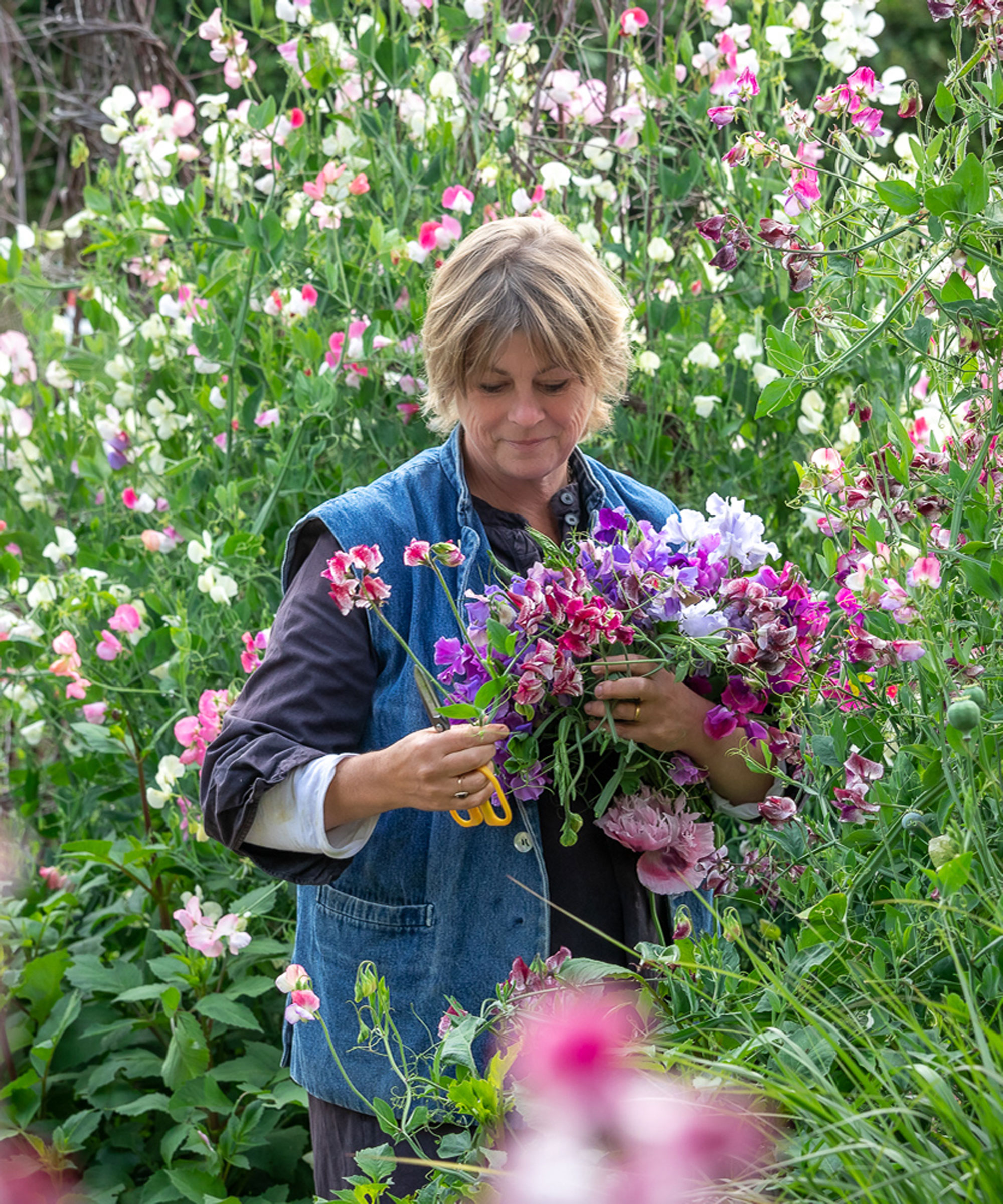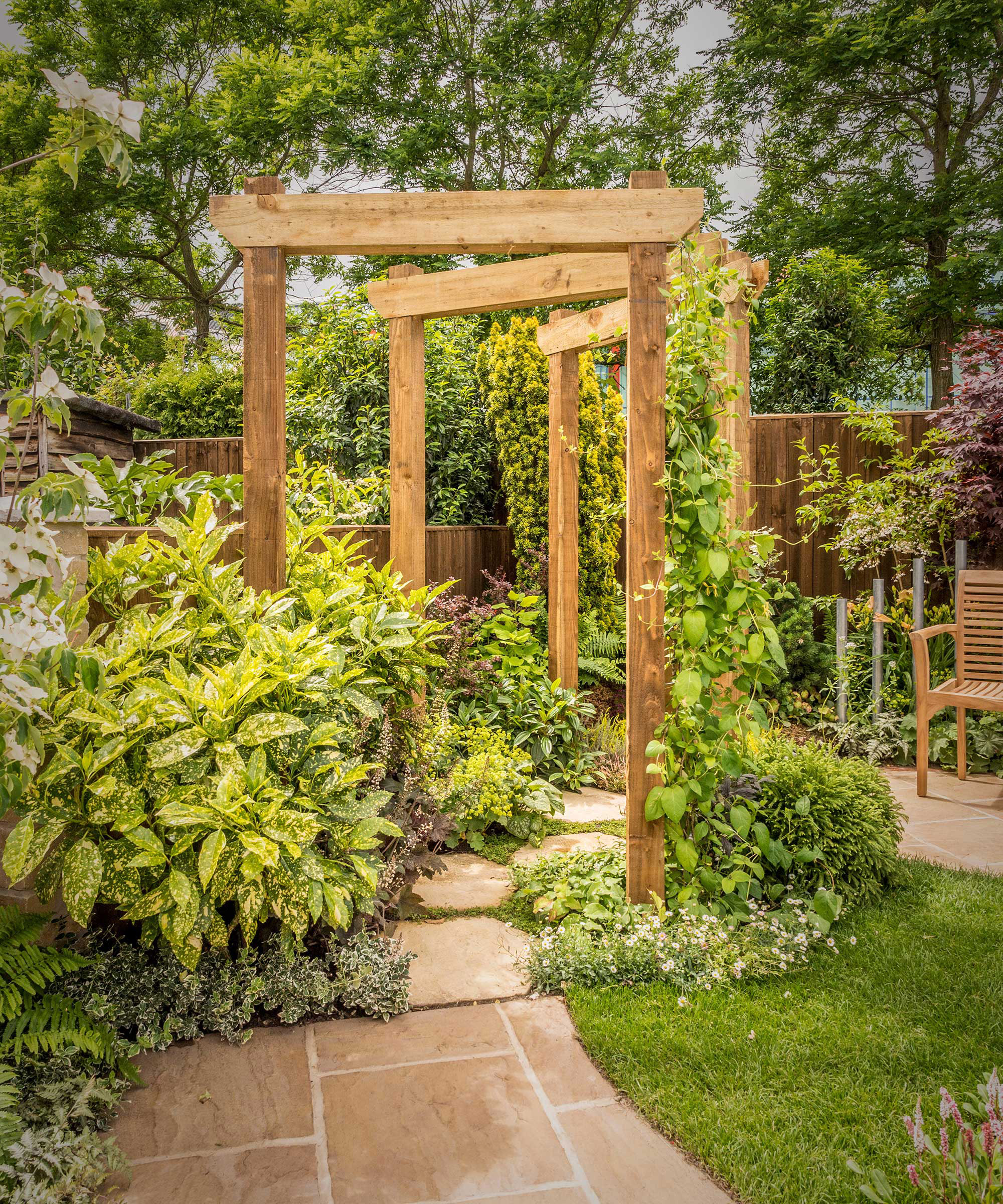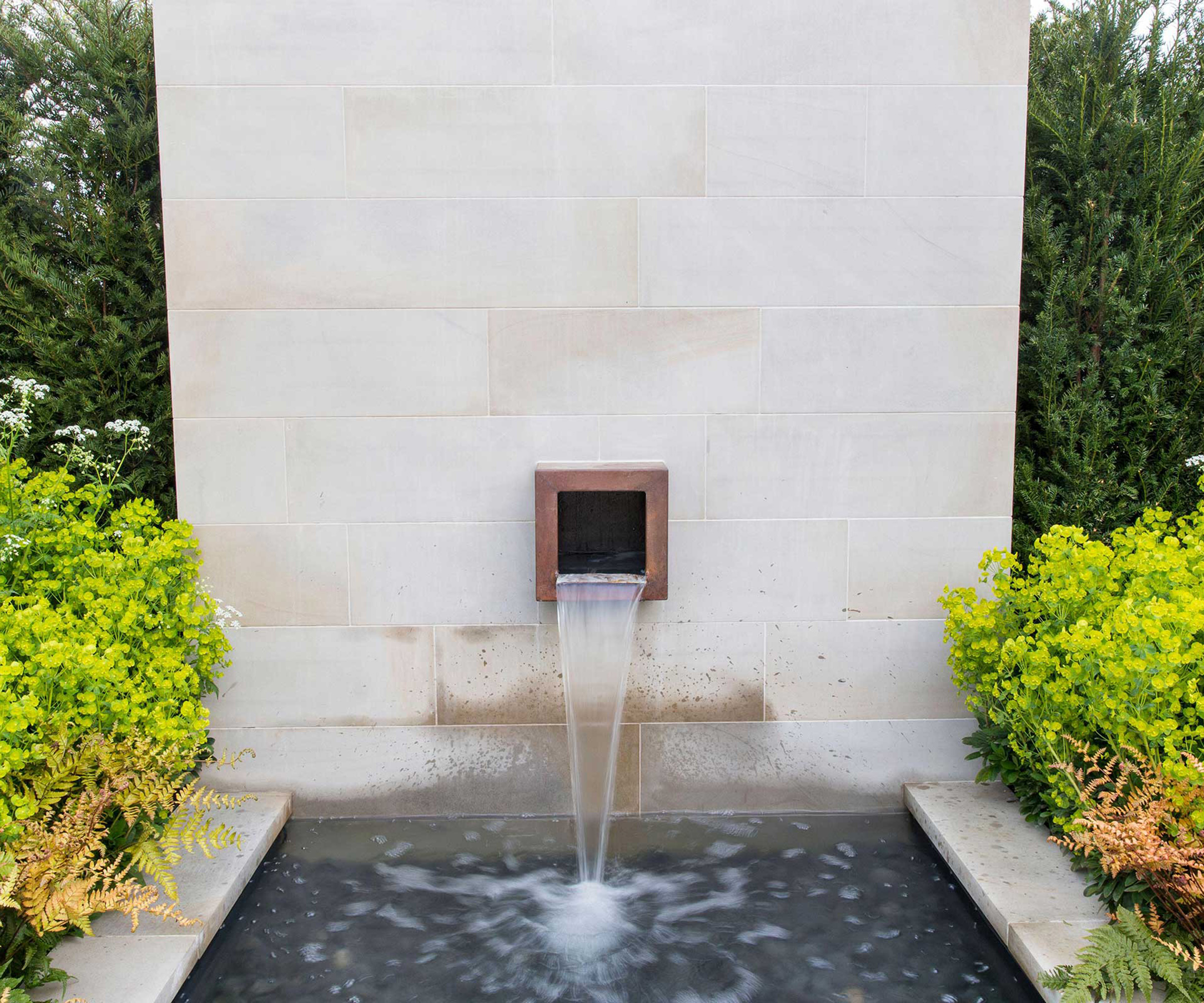Landscaping with shrubs – 10 ways to bring these wonderful, woody plants into your plot
Reliable, structural, and visually appealing ways to incorporate shrubs into your outdoor scheme


From pepping up fences and pathways to surrounding seating spaces, landscaping with shrubs is something that almost all backyards can benefit from.
There is a huge variety of these woody plants to choose from, some of which will grace your garden with blooms. And, as they are perennial, they'll offer consistent structure to your space year after year, often with little maintenance needed.
One of the best things about shrubs is they can work with all different types of backyard landscaping. They give structure to a garden so they're a vital component to consider when planning your planting.

10 ways to try landscaping with shrubs in your backyard
'Shrubs suit gardens of all shapes and sizes,' says expert plantswoman Sarah Raven, and 'some compact shrubs can be grown in pots, too. Many of them are wonderfully scented, so good to plant near a seating spot in the garden, or by a door or window to enjoy the fragrance. Shrubs also provide a great natural source of food and habitats for native birds and other wildlife.'
Whether you're planning to landscape a backyard from scratch or just a few on-trend updates, landscaping with shrubs is a great approach to consider. We've rounded up some of our favorite looks to get you inspired.

Sarah has been running cooking, flower arranging, growing and gardening courses at Perch Hill, her farm since 1999. She sells a comprehensive range of seeds, seedlings, plants, and gardening and floristry kits.
1. Soften a brick wall with colorful shrubs

There are lots of vibrant shrubs to choose from
Planting a tapestry of shrubs and climbers in front of a wall can mask any boring backdrop with a riot of colorful foliage and blooms. Depending on your backyard you may want to look at plants for north facing walls.
From acid-yellow-green leaves of Choisya 'Sundance' (which also offers fragrant white flowers) to deep-purple smoke bushes and the flame-red-tinged foliage of Photinia x fraseri 'Red Robin', there are all sorts of vibrant picks to choose from.
Design expertise in your inbox – from inspiring decorating ideas and beautiful celebrity homes to practical gardening advice and shopping round-ups.
And, for eye-catching plants to cover a garden wall, Sarah Raven suggests Chaenomeles x superba 'Crimson and Gold' – a Japanese quince. She says it's 'one of the loveliest wall shrubs to cheer us all up after the drear of winter, flowering on a sunny wall from early spring.'
A naturally spreading plant, it will need tying in if you wish to train it vertically. Try TriStar Plants - Flowering Quince 'Scarff's Red' Chaenomeles at Walmart.
2. Add modern structure around a seating space

Minimal planting makes a contemporary statement in this scene
Ornamental grasses are becoming more and more popular in garden design and for good reason. These low maintenance shrubs have architectural qualities, show-stopping texture, soothing movement, and a contemporary aesthetic.
They make a fantastic accompaniment to easy-care shrubs that can be clipped into neat shapes – boxwood or Japanese holly, for instance. Take this scheme as an example, where the two different types of form contrast appealingly against one another for a stylish raised border.
The surrounding stones add to the modern tone. And the best part is, if you decide on landscaping with evergreen shrubs, the scene will continue to look fantastic whatever the season.
Try 2.25 gal. Steeds upright Japanese holly plant at The Home Depot.
3. Pretty up pathways with flowering shrubs

Lavatera 'Barnsley' looks lovely alongside this walkway
If you're a fan of billowing blooms in your garden, perhaps for a cottage-garden border, then one or two flowering shrubs are a must.
This pretty pink plant is lavatera 'Barnsley', otherwise known as the tree mallow. It's a fast grower and will develop into a large, bushy shrub quickly, attracting pollinators with its prolific flowers. It's perfectly at home behind this miniature hedge.
For alternative flowering shrubs, Sarah Raven recommends Philadelphus 'Belle Etoile' – 'a superb philadelphus or mock orange, with one of the most delicious scents, reminiscent of orange blossom.'
It blooms from late spring into early summer with large, single white flowers, and flushed-maroon centers. She suggests Viburnum opulus 'Roseum', too, also known as the snowball bush, which is her favorite foliage plant for late spring and early summer picking.
And, for the colder season, don't forget that there are many winter flowering shrubs to choose from. Some, such as daphne and sarcococca, even offer a beautiful scent.
4. Add shrubs to a Mediterranean-inspired scheme

Choose drought-tolerant shrubs for a stylish and easy-to-care-for display
Drought-tolerant landscaping schemes are on the rise in popularity. This isn't just because they're so easy to maintain – as they need less water, they're more sustainable, too. Plus, when it comes to drought-tolerant plants, there are tons of beautiful options.
If you're planning a dry garden – perhaps as part of a Mediterranean-inspired scheme or gravel garden – then adding a shrub or two won't go amiss. Classic picks include hebes, euphorbias, rock roses, and of course, lavender – all of which will add striking color and form.
5. Surround a sunken patio with texture and color

We love the leafy backdrop to this seating area
Speaking of euphorbias, can you spot these bright lime-green, almost alien-looking plants rising from behind this sunken seating area? They look gorgeous alongside a dense mass of evergreen foliage which will hold its shape all year, as well as the ferns, geums, and shade plants like hostas that will re-emerge annually.
The mix of textures and colors is the perfect balancer for all the modern hardscaping, softening it beautifully.
6. Border a patio with hydrangeas

A favorite flowering shrub for lots of gardeners, and, once you know how to grow hydrangeas, they will thrive in both pots and in the ground.
With their statement blooms, they make a lovely backdrop for a patio seating area, as seen here. Hydrangea paniculata are particularly on-trend with their cone-shaped flower heads. Sarah Raven favors the 'Limelight' variety, 'which opens the cleanest, brightest acid-green. Then, the flowers fully flatten and turn pure ivory, before being washed with rich pink,' she says.
It has fantastically long garden value, she adds, and is happy in shade too.
7. Break up the layout of your lawn

Rather than opting for a generic stretch of lawn, consider breaking up the layout with pockets of planting. It will add a sense of intrigue to your backyard, as well as elevate the view.
Mix and match your low maintenance options for lawn edging, and intersperse them with vibrant perennials and perhaps a few annual varieties and small trees.
We love how the theme continues across tiers in this space, too, for a truly spectacular and cohesive setting.
8. Make a statement with large shrubs in containers

Shrubs can be valuable additions to your container gardening ideas, which is perfect if you're looking for landscaping tips for small plots.
Oversized planters like these can really help to break up a space and make a statement, particularly if they're in a bold hue. These have been filled with dense evergreen shrubs clipped into eye-catching domes.
There are lots of other shrubs that do well in containers, including Pittosporum tenuifolium 'Silver Queen' which has pretty, variegated leaves, and many types of camellias.
9. Elevate an archway

Soften structures with shrubs
Garden arches and pergolas are brilliant additions to a backyard, whether that's to define a pathway or offer shade to a patio. But if all the hard lines feel a little severe, then it's well worth adding a shrub or two alongside, as well as some climbing plants, of course.
Spotted laurel is a good, easy pick for shady spots and has attractive, mottled foliage and bright red berries in fall. Or, if your structure is near a seating area, go for something scented, such as Mexican orange blossom, or something colorful such as Californian lilac.
You could try the California Lilac at Nature Hills.
10. Frame a water feature

Euphorbia adds a bright pop of color to this scene
For a more formal look, frame features in your garden with a pair of identical shrubs – like this small fountain flanked by euphorbias. It's a simple approach but the sense of symmetry will always have appeal.
You could double up for your garden gate or perhaps your front door, too, to make a smart first impression. A duo of rosemary bushes, sarcococca, or shrub roses works well. And if you're planting them straight into the ground, you can add to the display by growing pretty blooms at their feet, including spring bulbs.
FAQs
How do you use shrubs in a landscape?
The golden rule for arranging any plant is to put it in a place where it will thrive. Otherwise, you'll constantly be fighting a losing battle. With this in mind, be sure to group shrubs that like similar conditions together.
Of course, you'll also need to think about the overall look of your arrangement. Picking shrubs that offer a variety of textures and tones can work well to create an interesting tapestry. It's always a good idea to try and include something for all seasons, too. For instance, lavender and hydrangeas will look amazing in summer, while witch hazel can offer some much-needed color during the colder months.
It's generally best not to go overboard with tons of different varieties, though, otherwise the outcome can look a little chaotic. Repeat-planting always looks chic and can help to tie together a scheme. And when you go to plant, try to keep the look organic (unless you prefer a very orderly effect). In borders, plant in odd numbers rather than even as it tends to look more pleasing, and avoid distinctly straight lines for a more naturalistic look.
Finally, check the eventual size of your shrub before you plant it and ensure you give it enough surrounding space for it to develop. If planting along a border or a wall, taller varieties should go towards the back, to ensure you can see everything clearly from your garden.
Depending on what style of backyard you like, there's always a plant that's suitable for you. It's important to design a garden and choose plants which will thrive in your US hardiness zone.

Holly started writing about gardening five years ago, and she is a regular contributor to Homes & Gardens. She has also written many gardening features for Woman & Home and Real Homes, too. She has previous experience as a professional gardener, where she helped to plant and maintain private gardens. Holly has also looked after allotment plots over the years and loves to grow her own flowers and veggies from seed. In her spare time, she enjoys visiting local gardens, botanical drawing, and tending to her ever-growing collection of houseplants.